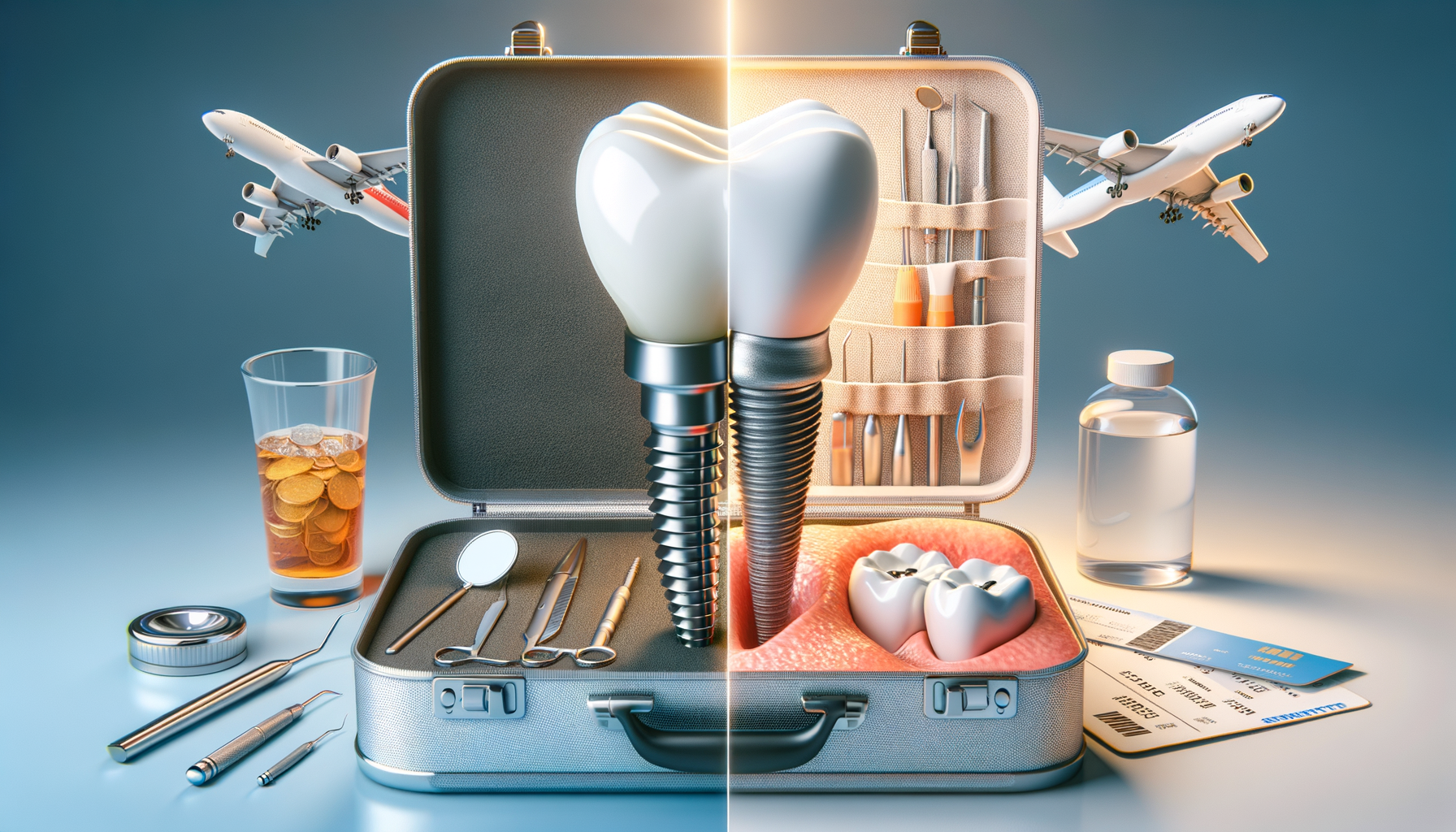Exploring Dental Implants: Affordable Solutions and Dental Tourism
Dental implants offer a reliable solution for missing teeth, and understanding their cost-effectiveness, especially for seniors, and the option of dental tourism can provide significant benefits.

Understanding Dental Implants
Dental implants have revolutionized the way we approach tooth replacement. These implants are titanium posts surgically positioned into the jawbone beneath the gums, allowing dentists to mount replacement teeth or bridges into that area. Unlike dentures, implants are permanent and provide a stable foundation for artificial teeth. The process typically involves several steps, including an initial consultation, the surgical insertion of the implant, a healing period, and finally, the attachment of a crown.
The benefits of dental implants are numerous. They offer improved appearance and speech, as they look and feel like natural teeth. Additionally, they provide enhanced comfort and ease of eating, as they function like your own teeth. Importantly, implants contribute to better oral health by not requiring the alteration of nearby teeth, as is the case with bridges. Furthermore, they are durable and can last many years, with some implants lasting a lifetime with proper care.
However, dental implants are not without their challenges. The procedure can be costly, and not everyone is a candidate. Good oral hygiene and healthy gums are prerequisites for a successful implant. Moreover, the process can be lengthy, sometimes taking several months from start to finish. Despite these challenges, the long-term benefits of dental implants often outweigh the initial inconveniences, making them a popular choice for those seeking a permanent solution to tooth loss.
Cost-Effective Dental Implants for Seniors
As we age, maintaining dental health becomes increasingly important, yet often more challenging. For seniors, dental implants can offer a reliable solution to tooth loss, a common issue in older age. However, the cost can be a significant barrier. Fortunately, there are ways to make dental implants more affordable for seniors.
One approach is to explore dental insurance plans that cover implants. While not all plans include this coverage, some do offer partial payment options. Another option is to look into dental discount plans, which provide reduced rates for dental procedures, including implants. Additionally, some dental schools offer implants at a reduced cost as part of their training programs, supervised by experienced professionals.
Financing plans can also make implants more accessible. Many dental offices offer payment plans that allow patients to spread the cost over several months or years. It’s important for seniors to consult with their dentist to explore all available options and determine the most cost-effective solution for their specific needs. By doing so, seniors can enjoy the benefits of dental implants without undue financial strain.
The Rise of Dental Tourism
Dental tourism is a growing trend where individuals travel abroad to receive dental care, often at a fraction of the cost in their home country. This practice has become particularly popular for procedures like dental implants, which can be expensive. Countries such as Mexico, Costa Rica, and Thailand are renowned for offering high-quality dental care at significantly lower prices.
There are several reasons why dental tourism is appealing. First and foremost is cost savings. Patients can save up to 70% on procedures compared to prices in the U.S. or Europe. Additionally, many dental clinics abroad offer state-of-the-art facilities and highly trained professionals, ensuring that patients receive excellent care. Furthermore, dental tourism provides an opportunity to combine dental care with a vacation, allowing patients to recover in a relaxing environment.
However, dental tourism is not without its risks. Patients must thoroughly research the dental clinic and ensure it meets international standards. Language barriers and the distance from home can also pose challenges. It’s crucial to weigh these factors carefully and consult with a local dentist before deciding on dental tourism. With proper planning and research, dental tourism can be a viable option for affordable dental care.
Comparing Dental Implant Options
When considering dental implants, it’s essential to compare different options to determine the most suitable choice. Factors to consider include the type of implant, the material used, and the overall cost. Traditional implants are the most common, but mini implants and All-on-4 implants are also available, each serving different needs and circumstances.
Traditional implants involve inserting a titanium post into the jawbone, which serves as a root for the artificial tooth. Mini implants, on the other hand, are smaller and require less bone density, making them an option for those with less bone structure. All-on-4 implants provide a full set of teeth using just four implants, offering a solution for those needing extensive dental work.
The material of the implant can also vary. Titanium is the most commonly used due to its strength and compatibility with human bone. However, zirconia implants are becoming more popular for those seeking a metal-free option. Each material has its advantages and considerations, and discussing these with a dental professional can help in making an informed decision.
Cost is another crucial factor. While traditional implants may be more expensive, they also tend to offer the most durable solution. Mini implants can be more cost-effective but may not be suitable for everyone. Ultimately, the choice of implant should be based on individual needs, budget, and the advice of a qualified dental professional.
Conclusion: Navigating Dental Implant Choices
Dental implants provide an excellent solution for those dealing with tooth loss, offering both functional and aesthetic benefits. For seniors, exploring cost-effective options can make this choice more accessible, while dental tourism presents an alternative route for affordable care. Understanding the different types of implants and their associated costs can guide individuals in making informed decisions.
As with any medical procedure, thorough research and consultation with professionals are essential. By considering all available options and weighing the benefits and risks, individuals can choose the path that best suits their needs and budget. Whether opting for local care or considering dental tourism, the goal remains the same: achieving a healthy, confident smile that lasts a lifetime.